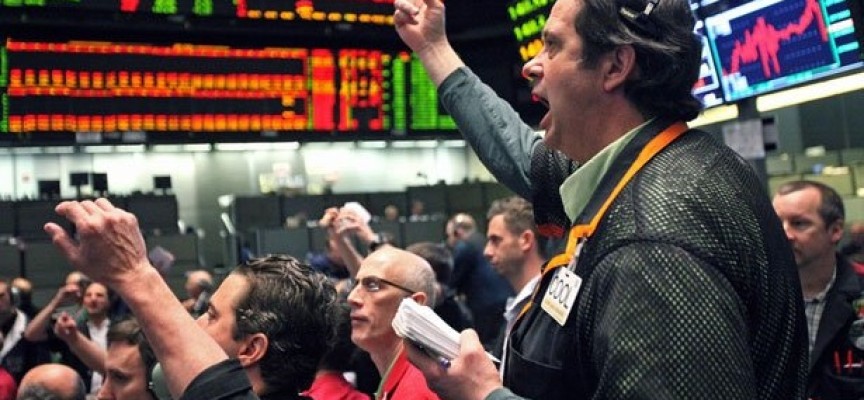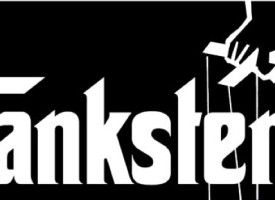Gold surges $21 as paper attacks in the gold market are about to come to an end.
Comments On LBMA Meeting In Lisbon
October 21 (King World News) – Alasdair Macleod: Gold eased further this week and silver marked time, as US Treasury yields moved higher. In European trade this morning, gold was $1625, down $19 from last Friday’s close, and silver was $18.34, up 11 cents. Comex volumes in gold were on the low side, while in silver they were moderate.
In Lisbon this week, at the LBMA conference Metals Focus launched its Precious Metals Investment Focus 2022/2023. It noted that the Fed’s interest rate policy was driving precious metal prices lower (with the exception of palladium). It expected dollar interest rates to continue to rise into next year but a hard landing would be avoided, and gold would remain rangebound until Q2 2023. It also forecast that “improving conditions should bolster investor risk appetite, which may encourage investors to rotate into equities rather than gold.”
The assumptions in the report must be challenged…
ALERT:
Legendary investors are buying share of a company very few people know about. To find out which company CLICK HERE OR ON THE IMAGE BELOW.
 Sponsored
Sponsored
It is worth noting that so long as paper gold dominates trading activity, there is merit in Metals Focus’s forecasts. They are made on the assumption that higher dollar interest rates make gold a relatively unattractive investment. And while paper traders continue to invest/disinvest without taking delivery, the interest rate relationship between credit markets and paper gold is a logical conclusion.
When credit markets are stable, the bullion banks and hedge funds can trade with each other on this basis. The assumption that a “hard landing will be avoided” is essential to paper markets controlling the price. But as I have argued in mainstream articles for Goldmoney, we face financial and economic disruption from a change in the long-term interest rate trend and consequently a substantial reduction in the quantity of bank credit.
Far from the benign outlook described in the Focus, the outlook for gold and silver prices will have to contend with the following issues:
- Systemic risks are increasing, evidenced by the problems at Credit Suisse, almost certainly shared with other major banks with exposure to a combination of falling financial asset values and deteriorating loan books.
- The assumption that central banks are still in control of interest rates is demonstrably false. With all eyes focusing on rising producer and consumer prices, markets are taking charge, driving interest rates and bond yields higher, leaving the Fed and other central banks powerless.
- OTC derivatives, which expanded to an estimated $600 trillion in a falling interest rate environment, face extensive contraction now that the major long-term trend is for rates to rise.
- The consequences of over-leveraged banks panicking to reduce their balance sheet exposure are poorly understood. It forces the entire banking cohort to get out of financial assets, both on their balance sheets and held as loan collateral. This statement applies to derivative positions as well.
- Nearly all transactions that make up GDP are settled in bank credit. Therefore, a reduction in total bank credit reduces GDP. With bank balance sheets more leveraged than at any time in history, the scale of the reduction will be unimaginable. Consequently, we face a global slump at least on the scale of 1929-1932.
- The Fed has a simple choice. Does it expand its balance sheet to counteract contracting bank credit, save markets, and attempt to stabilise the economy, in which case it hyperinflates the currency. Or does it act save the currency and ignore the inevitable collapse in financial values, risk collapse of the banking system, widespread bankruptcies in the non-financial economy, and record unemployment? Every central bank faces the same simple choice. History, Keynesian beliefs, and central bank mandates all clearly point to saving markets, the financial system, and the underlying economy at the expense of the currency.
The Panglossian view of traders in the paper markets may have been appropriate in calmer times. But the last time we had a true inflation scare was in the 1970s, when gold rose from $35 to $850, while US prime rates rose from 4.5% in February 1972 to a record 21.5% in December 1980. So much for higher interest rates driving gold prices lower.
The trading members of the LBMA do not understand the economics of gold, that physical gold is money and not an investment. And that already, demand for bullion is outstripping supply. Increasingly, their paper games are running on vapour.
ALSO JUST RELEASED: Shocking 46% Price Inflation! Plus Jingle Mail For Car Keys CLICK HERE.
ALSO JUST RELEASED: We Are Now On The Edge Of A Global Currency Apocalypse CLICK HERE.
ALSO JUST RELEASED: Pensions Panicking After Leveraged Bond Disaster, Plus Mysterious Cayman Islands Buyer Strikes Again CLICK HERE.
ALSO JUST RELEASED: 46% Of Canadians Approaching Insolvency, Plus Scientists Reverse Again In Humans CLICK HERE.
ALSO JUST RELEASED: The Most Expensive Bribe In History, Plus The Global Panic Into Cash CLICK HERE.
ALSO JUST RELEASED: Stocks Rallying But We Have Another Major Collapse Unfolding CLICK HERE.
ALSO JUST RELEASED: 2 Truly Shocking Charts, Plus An Email From A King World News Reader CLICK HERE.
ALSO JUST RELEASED: Look At What Just Plunged To One Of The Worst Levels In History CLICK HERE.
ALSO JUST RELEASED: Illiquidity Causing Full-Blown Panic In World Markets CLICK HERE.
ALSO JUST RELEASED: A Terrifying Black Swan Of The Largest Magnitude Has Been Unleashed CLICK HERE.
ALSO JUST RELEASED: BUCKLE UP: The Entire $600 Trillion Derivatives Market Is Beginning To Unwind CLICK HERE.
© 2022 by King World News®. All Rights Reserved. This material may not be published, broadcast, rewritten, or redistributed. However, linking directly to the articles is permitted and encouraged.








